Defence of a temporary feeding territory by an inland juvenile Kittiwake Rissa tridactyla
Defence of a temporary feeding territory by an inland juvenile Kittiwake Rissa tridactyla |
|
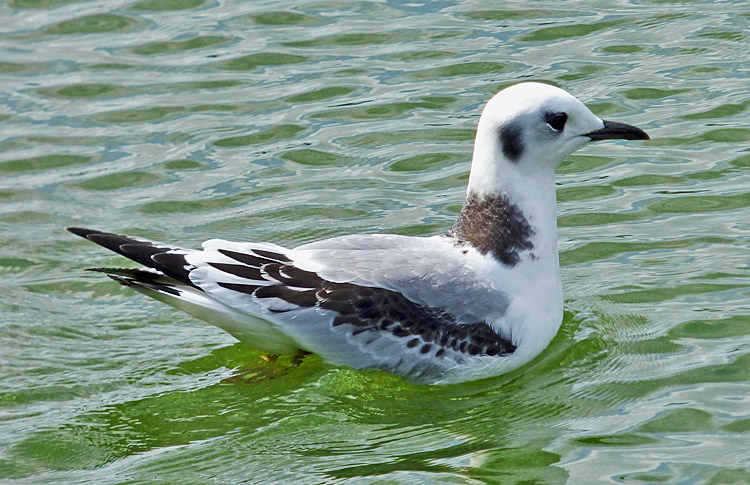
© A. R. Dean
Plate 1. Juvenile Kittiwake, Olton Mere, West Midlands, August 2019
A juvenile Kittiwake was present for several days in August 2019 at Olton Mere in the West Midlands. At that time the reservoir was subject to an intense algal bloom, with much of the water surface clothed in a dense green film and accumulating in a thick layer where driven inshore by the prevailing winds. Despite this indication of high nutrient pollution, a huge and extensive shoal of small fish was occupying the water off the eastern and northern shores. They were visible as a concentrated mass below the algal bloom but it was difficult to determine confidently their appearance and identity. They were perhaps roach fry (or fingerlings). They numbered in many hundreds and accumulations of air bubbles were continuously rising to the surface, creating expanding 'rings' above the densest concentrations of fish. It was these conspicuous rings which may have drawn the attention of gulls.
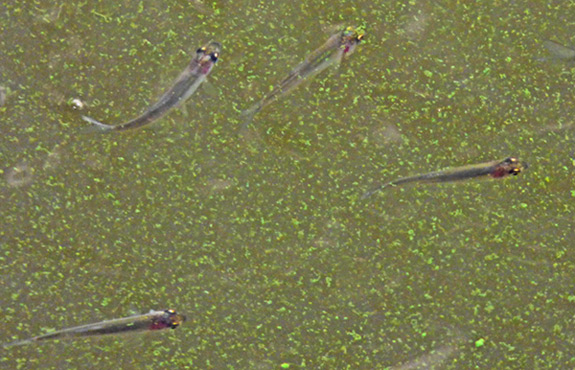
© A. R. Dean
Plate 2. Examples of fish fry from huge shoal at Olton Mere, West Midlands, August 2019
.
© A. R. Dean
Plate 3. Enlarged image of fish fry - their natural size was c. 4 to 6 cm.
This area was adopted as a feeding territory by the Kittiwake, though it fed most-actively on insects and other items floating on the surface, which it collected calmly while swimming to and fro across the area. It fed almost continuously during its stay and, thereby, such small items appeared to meet its food requirements.
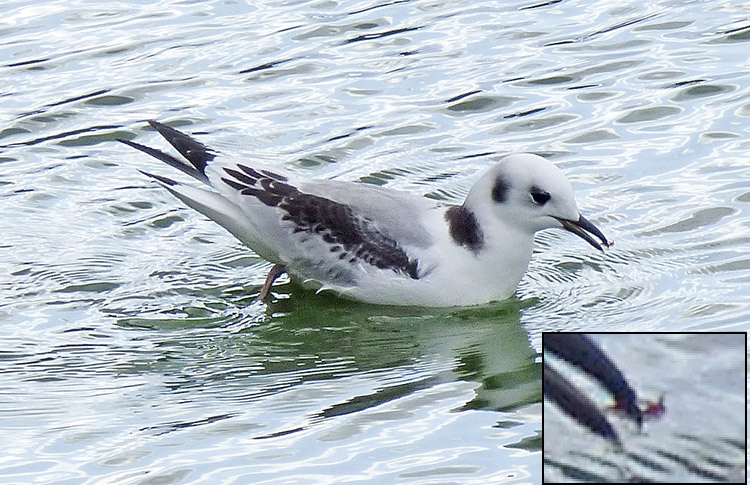
© A. R. Dean
Plate 4. Juvenile Kittiwake, Olton Mere, West Midlands, August 2019

© A. R. Dean
Plate 5. Juvenile Kittiwake, feeding on floating items, Olton Mere, West Midlands, August 2019
Less frequently the bill and forehead were thrust into the water and occasionally the entire head and body were submerged. This more vigorous and sub-surface feeding was perhaps targeting the fish.
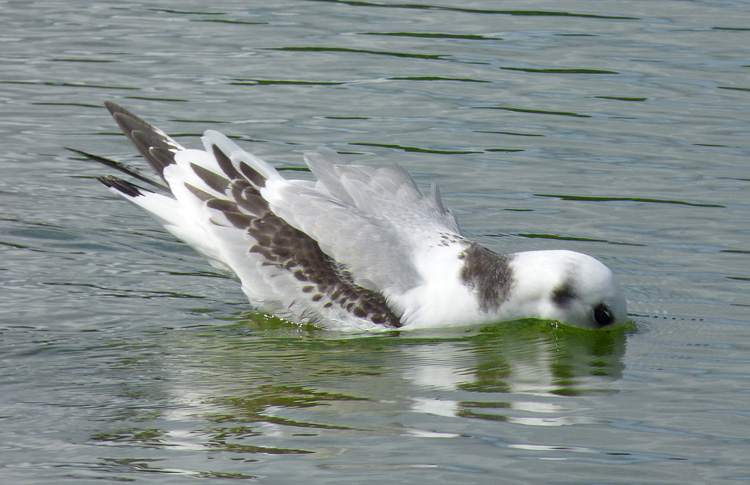
© A. R. Dean
Plate 6. Juvenile Kittiwake, apparently feeding on sub-surface prey, Olton Mere, West Midlands, August 2019

© A. R. Dean
Plate 7. Juvenile Kittiwake, plunging head and body under water while feeding, Olton Mere, West Midlands, August 2019
Two first-winter Black-headed Gulls which started to visit the feeding territory established by the Kittiwake were chased away vigorously. The Black-headed Gulls employed shallow plunge-diving and were presumably targeting the fish. Despite its greater preference for floating food items, the Kittiwake was nevertheless initially intolerant of the Black-headed Gulls. The Kittiwake would swim towards them and then, when close, it would fly directly at them, The Black-headed Gulls would always fly off before physical contact was made. They appeared subservient to the Kittiwake and were never seen to respond with hostility but would return to the area after a short absence.
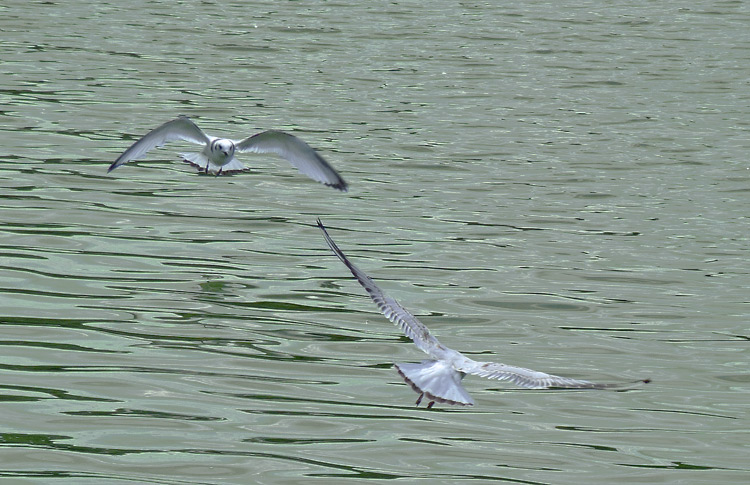
© A. R. Dean
Plate 8. Juvenile Kittiwake, flying in to displace 1W Black-headed Gull infringing on its feeding territory ...

© A. R. Dean
Plate 9. ... then chasing off the Black-headed Gull - which soon returned however. Olton Mere, West Midlands, August 2019
Biometrics in BWP3 (1983) and Olsen & Larsson (2003, 2004) indicate that adult Kittiwake has a wing-length comparable to Black-headed Gull but averages some 30% greater in weight. This significantly greater weight no doubt led to its dominance over the lighter species. That a juvenile Kittiwake adopted a feeding territory and defended it vigorously indicates that this was an innate behaviour not learned. Nevertheless, the Kittiwake became gradually more accepting of the Black-headed Gulls and after four days it began to ignore them.
Interestingly, this individual was one of that minority of juvenile / first-winter Kittiwakes which has greyish-flesh legs, the majority exhibiting dark brown legs (see Olsen & Larsson's Gulls of Europe, Asia & North America, 2003, 2004). Occasionally, the pinkish legs could be detected while the bird was swimming (plate 4). Although spending nearly all its time on the water, on two occasions it was seen to fly to and perch on a yachting pontoon. On one of these occasions it then indulged in an extended preening session (plate 10). While perched, the colour of the legs and feet was well displayed (plates 10 - 12).

© A. R. Dean
Plate 10. Juvenile Kittiwake, preening session, Olton Mere, West Midlands, August 2019

© A. R. Dean
Plate 11. Juvenile Kittiwake with pale greyish-flesh legs, Olton Mere, West Midlands, August 2019
|
|
|
|
Home |
Mediterranean
| Laughing |
Franklin's |
Little |
Sabine's |
Bonaparte's |
Black-headed |
Ring-billed | Common |
Lesser Black-backed | |